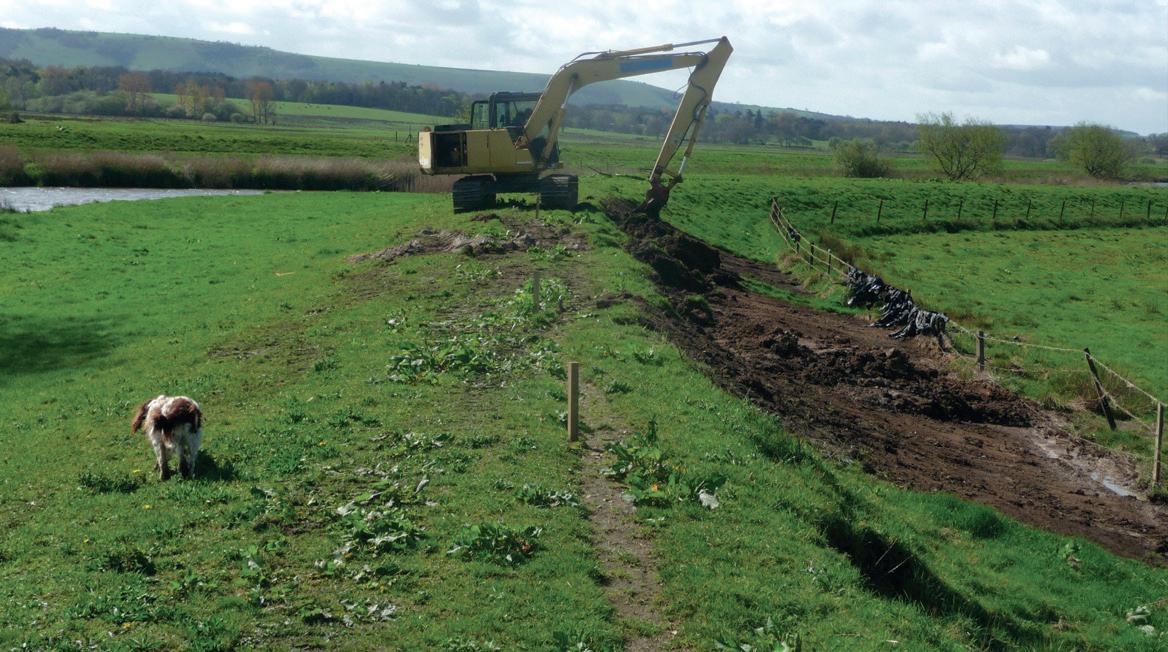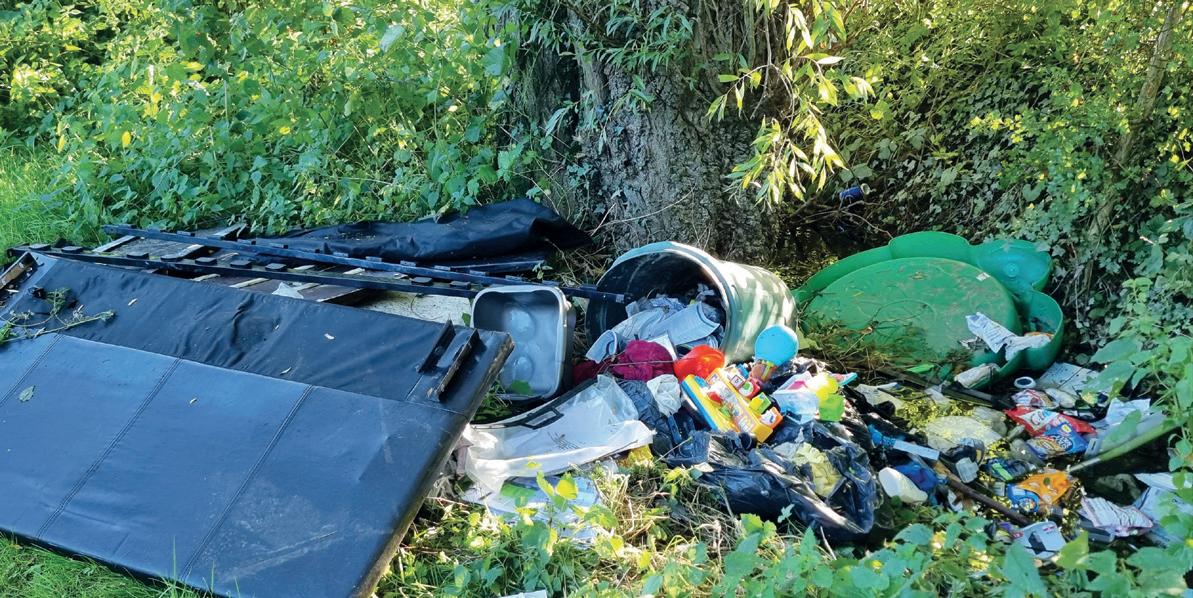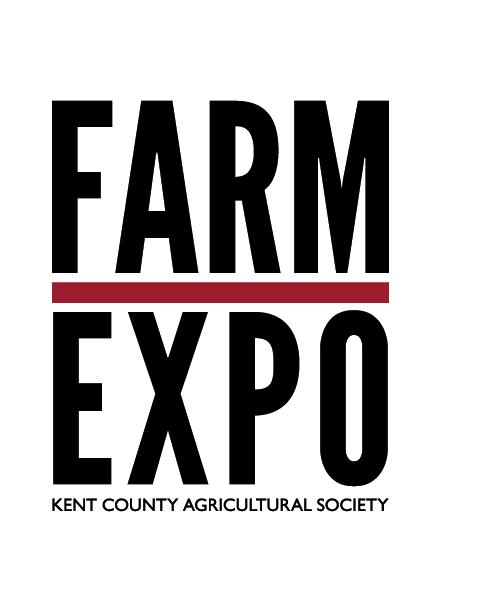
12 minute read
Progress delivered at pig industry crisis summit.
Commitments made at the pig industry crisis summit hosted by Farming Minister Victoria Prentis in mid February need to be turned into actions quickly if they are to have any chance of achieving their goal, the National Pig Association (NPA) has stressed.
While the NPA said that the round table summit had “delivered some progress”, chairman Rob Mutimer stressed that the comments made “now need to be acted on and implemented with real urgency to provide desperate pig farmers with some hope for a viable future”.
The crisis meeting saw the NPA and NFU joined by pig producers and representatives from all the major retailer and pork processors, along with Ms Prentis, at an industry roundtable meeting at DEFRA’s London headquarters.
“We are grateful to Minister Prentis for bringing all parties – producers, processors, retailers and their trade organisations – together to try and find solutions to this deteriorating situation,” said Mr Mutimer. “She certainly recognises the size and the urgency of the problems and there was a real focus on an immediate plan to reduce the current backlog of pigs on farms.
“There was, however, no silver bullet – there was never going to be. The truth is we need more from the supply chain in terms of a workable plan.
“The challenge is to build on what we have got here and ensure every single organisation involved in the supply chain is focused on getting that backlog down and easing some of the intolerable pressure currently on pig producers.”
Figures from DEFRA show that processors killed 986,000 pigs in November, 952,000 in December, but just 873,000 in January, which the NPA suggests shows that there is slaughter capacity in the system, although processors told the meeting they had been working to full capacity on weekdays.
The current backlog of pigs on farm is estimated to number at least 200,000, while the NPA is aware that 35,000 healthy pigs have been destroyed on farm and believes the true number is higher. It is aware of 40 independent producers that have left
SOME PROGRESS DELIVERED
the industry and 30,000 sows that have been lost from the English breeding herd – a fall of 10%.
The NPA plans to write to the Minister to ask that processors produce a detailed, regularly updated plan setting out how many pigs they plan to slaughter per week, how many they actually have slaughtered, and the progress made towards reducing the backlog. “After six months of this, the least producers can expect is some clarity on the future so they can plan properly. Finding out on a Friday night how many pigs are going the next week is simply not good enough,” Mr Mutimer said.
The meeting was told that the Government is considering changes to its support package, including allowing fresh pork from pigs killed under the slaughter incentive payment scheme to be sold on the domestic market, helping get more pigs through the system and adding value to the carcase.
The roundtable also discussed the need for retailers to work with processors to stock and promote more British pork as it comes through the system.
While labour shortages are still being blamed as the primary cause of the problems being experienced by the industry, the meeting heard that the temporary skilled worker visas have made little impact, with only just over 120 of the 800 available visas used.
Although the NPA and others called for changes, including the removal of the unnecessary English language requirement and adding butchers to the shortage occupation list, delegates were told this was not within DEFRA’s remit, although Ms Prentis agreed to convene a meeting with the Home Office and interested parties to look at the issues.
While DEFRA is still resisting calls for a compensation package for producers, the Minister did agree to talk to the banks to ask them to “look with leniency” on cases where pig farmers are experiencing difficulties. She has also agreed to carry out an immediate review of supply chain fairness in the pig sector.
Applications are now open for the third strand of the Government’s Environmental Land Management scheme (ELMS), following the launch of the Landscape Recovery Scheme.
The scheme allows farmers and landowners to apply for funding to support projects that will restore nature, reduce flood risks and boost
APPLICATIONS OPEN FOR THIRD TIER ELMS SCHEME
biodiversity, with a focus on more radical and ambitious land-use change and habitat restoration. Schemes could involve establishing new nature reserves, restoring floodplains to help reduce the risks from flooding or creating woodland and wetlands. The first round of Landscape Recovery is open to individuals or groups who want to work together on larger projects covering from 500 to 5,000 hectares.The projects willfocuson two separate strands. Those aimed at recovering and restoring England’s threatened native species will beadministered by Natural England, while those aimed at restoring streams and rivers to improve water quality and biodiversity and help them adapt to
GOVERNMENT BACKS DOWN ON SILAGE WRAP
A “great result for us” has been hailed as saving farmers around £5m a year after the Government backed down on plans to include silage wrap within the Plastic Packaging Levy.
The proposal, which would have added a £200 a tonne tax to silage wrap, was abandoned following urgent top-level talks between NFU President Minette Batters and Treasury Minister Helen Whately.
The alarm was sounded in last month’s South East Farmer when a letter from Mark Webb, chairman of The Green Tractor Scheme, urged farmers to protest against the plan and pointed out that it could jeopardise the viability of the Agriculture, Plastics and Environment (APE) recycling recovery scheme for farm plastics.
The National Sheep Association (NSA) had also urged Her Majesty’s Revenue and Customs (HMRC) to reconsider plans that would have seen silage wrap included in the plastic packaging tax from this April.
The NSA pointed out that HMRC’s December 2021 guidance represented a complete about turn for HMRC, which had previously accepted that wrap was a ‘product’ and not ‘packaging’ because it was not used to transport goods or products from the manufacturer to their fi nal destination.
Chief Executive Phil Stocker added that the impact of the extra cost on farm budgets would be “made even worse by new trade deals with countries that are not subject to the same costs. These trade deals will prevent the option of simply passing additional costs on to the consumer.”
It was the NFU team’s intervention with the minister, though, that resulted in a decisive change of heart by the Government, a move that left Ms Batters “extremely proud of the team”.
In her weekly video blog to members she detailed the impressively short timescale in which she discussed the proposals with Ms Whately, responded to the minister’s request for “a full and comprehensive breakdown of costs” and then received the news that the Government’s mind had been changed.
The NFU team stressed that the primary role of silage wrap was to ensure fermentation rather than as packaging and argued that its function made more recyclable or biodegradable wraps impractical.
The Treasury agreed, conceding: “Following further careful analysis, HMRC has confi rmed that silage fi lm falls under an exemption. Representations made by you and others have demonstrated that (it) is a highly specialised product, the primary purpose of which is to enable fermentation.”
Mr Stocker had warned that the imposition of an additional £200 per tonne tax would have a detrimental impact on the collection and recycling of farm plastic via the APE scheme, through which farmers were already voluntarily paying £60 a tonne to have silage wrap collected.
climate change will be administered by the Environment Agency. Launched by Environment Secretary George Eustice at the Oxford Farming Conference, Landscape Recovery is the most ambitious of the ELMS strands, running alongside the Sustainable Farming Incentive and Local Nature Recovery, together intended as a post-Brexit replacement for the Basic Payment Scheme currently being phased out.
Applications for this round of funding will close on 24 May 2022 and will be followed by a “competitive” selection process assessed by DEFRA against criteria “focused on the projects’ potential impact, feasibility and costs”. Up to 15 projects will be taken forward within the total project development budget of £7.5m.
Commentators expect the Local Nature Recovery Scheme to be piloted in 2023, with full rollout not expected until 2024.
OPINION
Fall-out from this confl ict will aff ect us all
As most of the population emerges from beneath the shadow of Covid-19 restrictions, so the world seems set to plunge into another storm, with Russian aggression in Ukraine now exposed as more than just sabre rattling.
I will leave predictions on the impact of turmoil in that part of the world will have on grain prices to Elved Phillips, whose valued contribution to this magazine each month continues to impress with its in-depth analysis of complex world events and their ramifi cations, but clearly the fall-out from this confl ict will aff ect us all.
Within hours of President Putin sending troops into Ukraine, the price of oil surged through the 100 dollars a barrel mark, a hike that will inevitably ensure that the rise in input prices currently hitting farmers so hard will get worse before it gets better.
It follows storms that will have added to many farmers’ woes, with polytunnels particularly vulnerable to the 80mph winds that slammed into the South East but other exposed farm buildings likely to have taken a hit.
Meanwhile, on the other side of the balance sheet, the updates keep coming on the roll out of the Environmental Land
Management schemes designed, at least in theory, to replace subsidies that are steadily dwindling following the UK’s exit from the EU.
It would be naïve to think that many farmers expected the route out of the EU to lead directly to the sunlit uplands of independence and greater profi tability, but they surely had a right to expect greater clarity, earlier information and more generous schemes that at least covered the costs involved in signing up to them.
It is interesting that the DEFRA announcements on the three ELMS strands take every possible opportunity to detail how the schemes meet the Government’s objectives of improving the environment, tackling climate change and moving towards zero carbon but seem short on comments about helping farmers make a living.
This columnist isn’t about to become a climate change sceptic, and there is clearly a need to protect and enhance the soil that is so vital to the industry and reduce our carbon emissions, but there has to be balance between turning the countryside into a theme park and feeding the nation.
Pendulums swing, and we have to hope that the current focus on the environment will be followed by a realisation that agriculture needs a little TLC, too. Farmers, meanwhile, will just get on with the job, despondency lifting at the sight of a new born lamb or green shoots in the fi elds – and at least, with Covid-19 in the country’s rear-view mirror, we can drown our sorrows with a pint amongst friends. MALCOLM TRIGGS - EDITOR
EMAIL YOUR VIEWS, LETTERS OR OPINIONS TO: sef.ed@kelsey.co.uk or write to the address on page 3
NEWS LEADING THE WAY ON CARBON EMISSIONS
Fossil fuel-free trucks, green electricity and lowenergy solutions are set to see farmer-owned dairy group Arla Foods make a dramatic cut in its carbon emissions over the next eight years.
Arla has increased its target for reducing its carbon emissions from 30% to 63% by 2030, a fi gure that has been approved by the Science Based Targets initiative (SBTi) as enough to keep global warming to 1.5°C, in line with the most ambitious goal of the Paris Agreement. The new targets mean that the cooperative is more than doubling its ‘scope one and two’ emission reductions, having achieved a 24% cut since 2015. Scope one emissions relate to activities under a company’s direct control, while scope two relates to indirect emissions caused by the energy it purchases.
To help reach the 63% target, Arla has said it will continue to invest heavily in sustainability actions and plans to increase total investment by 40% to around £3.3bn over the next fi ve years.
Key activities will include converting Arla’s owned fl eet of milk tankers and distribution trucks to fossilfree solutions through biodiesel, biogas and electric vehicles, optimised route planning to reduce total mileage and working with logistics suppliers to help reduce their CO2 emissions as well.
On the production side, it plans to use 100% green electricity in Europe through green power purchase agreements and investment in wind and solar projects and reduce its energy consumption by investing in low-energy solutions such as heat recovery solutions, using electric boilers and optimising electrical equipment across its dairy sites. Ash Amirahmadi, Managing Director of Arla Foods UK, said Arla was “one of only 59 food and beverage processors globally and one of the fi rst farmer-owned dairy cooperatives in the world to have a 1.5°C target approved by the Science Based Targets initiative”.
He added: “With Arla’s farmer owners already among the most carbon effi cient farmers in the world, it is right that we also show leadership in reducing carbon emissions across the production and operational side of the cooperative.”


6
£25 MILLION FUNDING FOR HIGH TECH MACHINERY
Time is running out for farmers and growers to apply for up to £500,000 in government cash from the Improving Farm Productivity strand of the Farming Investment Fund.
Grants ranging from £35,000 up to £500,000 are available to invest in productivity-boosting equipment such as driverless tractors, automated milking systems and robots that harvest, spray and weed crops.
The scheme, worth £250 million in total, is the latest instalment of the Farming Investment Fund and is designed to boost productivity – but the
Farm and Equine Plastic

Recycling Scheme

32 sites across England
01793 842062 farmxs.com The professionals in rural recycling

THE GREEN TRACTOR
SCHEME application window closes on 16 March.
It is part of the Agricultural Transition Plan that the Government says is designed to “reward farmers and landowners for actions which benefi t the environment, supporting sustainable food production alongside vital nature recovery and work towards net zero”. Farmers can also apply for grants towards new slurry management systems, enabling them to invest in equipment that lowers the acid in slurry which in turn increases the nutrients for plants and reduces ammonia emissions and pollution.
Farming Minister Victoria Prentis said the grants were “aimed at contributing towards the purchase of new and green equipment that can bring a positive change to the day-to-day operation of a farm, as well as the wider environment”. At least 60% of the project costs need to be paid for through private sources like savings or a bank loan.
Further themed grants will open later this year.











